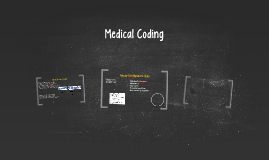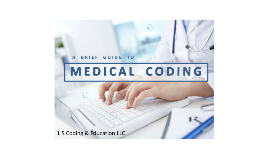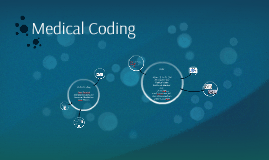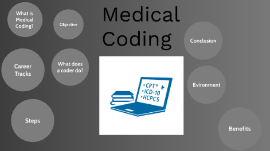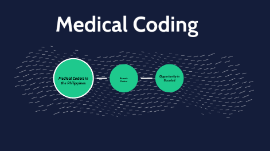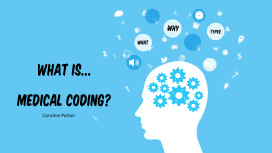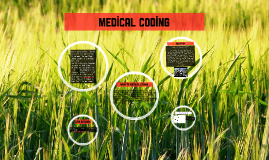MEDICAL CODING
Transcript: Medical Necessity Medical necessity and patient diagnosis: Claims are paid by insurance companies based on what CPT (Medical, surgical, radiology, laboratory, anesthesiology, and evaluation/management services of physicians) code submitted. In order to submit a CPT code, it must attach ICD codes along with the CPT claim. Documentation For example, if the patient came in with a fever and sore throat, and billed for a urinalysis, then insurance would not pay for it. This is because it is not medically necessary to perform a urinalysis on a patient who is not having any urinary symptoms or problems. This means that not only does the doctor have to document everything that is done in the office, but also has to do because of specific diagnoses. Usually this is not very difficult, because providers perform procedures based on the patient's diagnosis. If not documented, the rationale for ordering diagnostic or other services should be easily inferred. The patient’s progress, response to and changes in treatment and revisions in the diagnosis should be documented. The CPT and ICD-9-CM codes reported on the health insurance claim form or billing statement should be supported by the documentation in the medical record. ICD Code: The International Classification of Diseases. Ex: ICD Code is 462 and its description is acute pharyngitis. Good documentation is the key to correct coding of E/M services Documentation for each encounter must stand alone. Proper sequencing of diagnoses. Provide specific and descriptive documentation. It is related to activities which may be justified as reasonable, necessary, and/or appropriate, based on evidence-based clinical standards of care and decision by patient health plan that the treatment, test, or procedure is necessary for patient health or to treat a diagnosed medical problem. CPT Code: Current Procedural Terminology is a five digit numeric code that is used to describe medical, surgical, radiology, laboratory, anesthesiology, and evaluation/management services of physicians, hospitals, and other health care providers. There are approximately 7,800 CPT codes ranging from 00100 through 99499. Ex: Service code 85025 means blood count, complete (CBC). For example, when patients come into the office with more than one diagnosis and have more than one procedure performed. If a patient has a suspected urinary tract infection, but also has a fever and sore throat, then the doctor might perform a urinalysis as well as a strep throat swab. It must link the correct diagnosis (urinary tract infection) with the correct procedure (urinalysis), in order for the insurance to pay. If the billed codes not link the procedures correctly, then insurance will deny all of the procedures for medical necessity. Remember, if it's not documented, it never happened, so if doctor forgets to write the urinalysis down, then the insurance company will assume it never happened. What this means is that if they request records for office visit, and billed for a urinalysis, then they will not pay for it, because it's not written down in the chart. Common Denials 1. VP III and HVS examination if both ordered any one will be accepted by insurance. 2. Antibody Hepatitis C test is not covered under ANC screening profile, Please don’t order with ANC profile. 3. Routine Vitamin D testing is considered by Daman as a form of screening and should therefore only be covered under plans that include screening benefits. Vitamin D test is only supported for certain medical conditions such as proven osteoporosis, rickets, osteopenia, malabsorption syndromes and renal disease or drugs that affects vitamin D metabolism. 4. If Vitamin D test and ESR test both ordered- anyone will be accepted by insurance. 5. Don’t order Uric acid test with ESR, CRP, Rheumatoid factor for Arthritis related problems-anyone will be accepted by insurance. clinical example Medical Billing Errors Medical Coding Medical coding: is the process of transforming descriptions of medical diagnoses and procedures into universal medical code numbers. The diagnoses and procedures are usually taken from a variety of sources within the health care record, such as the transcription of the physician's notes, laboratory results, radiologic results, and other sources. There must be a reason for every visit (the ICD code), whether it is getting a Lab test, Scan, doing a colonoscopy, performing a surgery, procedure and visiting the doctor's office. When submits CPT code to insurance companies, they must attach with proper related ICD codes as part of the documentation in accordance with generally accepted standards of medical practice. Example 1, a patient presents to the office with chest pain and the physician orders an electrocardiogram (ECG). A 12-lead ECG performed in the office and interpreted by a physician is reported with CPT® code 93000. The reason the physician orders the ECG is because the patient is complaining of chest pain. The diagnosis code for






